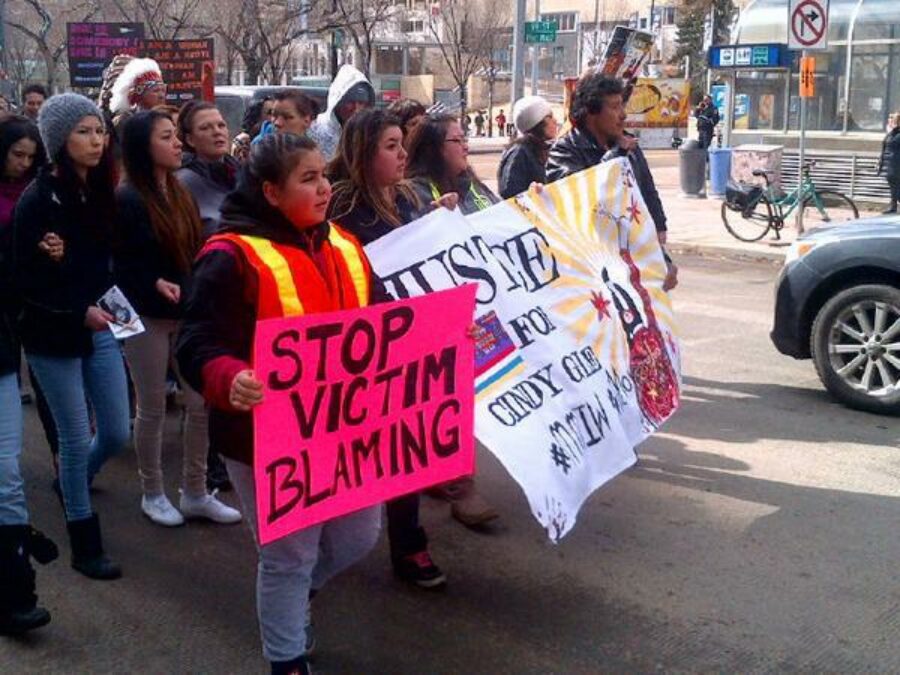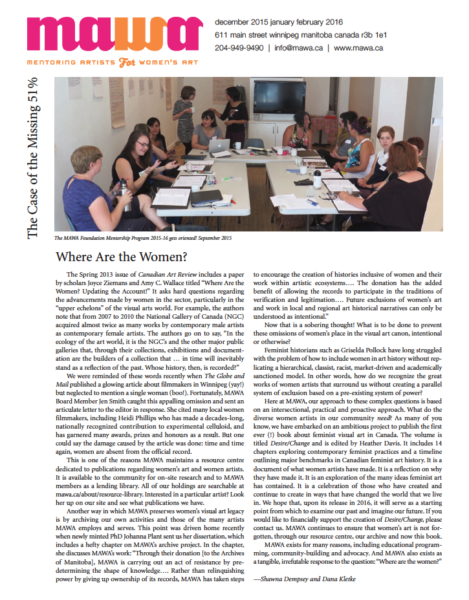
Two Vaginas on Display
by Mary Joyce
Two vaginas on display.
One, Cindy Gladue’s: like her, young, Cree, from Alberta. The other, David Altmejd’s: an art object made by a young, male, Canadian star artist. The timing of their conjunction: spring 2015.
In March of 2015, truck driver Brad Barton faced trial by jury for the death of Cindy Gladue. Warnings as to “disturbing content” prefaced the media reports of the trial. For the first time in Canadian history, preserved body tissue, Gladue’s severed vagina, was presented in court. It was handled by pathologists for the prosecution, using an opaque screen and an overhead projector to display her 11 cm wound, the cause of her death.[1] The perpetrator claimed the victim had consented to “rough sex”; she “bled out” in his bathtub while he slept. Since a cut presumed intent and a tear did not, the jury, concluding it saw a tear, acquitted the perpetrator. From this judgement, it seems the law allows a person to consent to their own death and that this “consent” lifts legal and moral responsibility for murder off the killer.[2]
The vagina produced by David Altmejd and portrayed on the cover of Winnipeg’s spring Border Crossings is a portion of vulva made of pink resin, polystyrene, foam epoxy, paint, hair, beads and quartz crystals. This vulva occupies the concave interior of a sculpted human head with the front sliced off, the ears and hair emerging out of thick white fatty scalp tissue on the exterior of the form. The clitoris is positioned at the top of the skull, the raspberry anus at the base, just above the narrowing channel of the neck. A vagina, betoothed with quartz crystals, referencing male fear of female organs, occupies the centre. This detail, minus the container of human skull, is pictured on the Border Crossings cover, accompanied by the statement “we are monsters.” It is not known whether the artist approved of this choice. Where does the responsibility for this confluence of cropped image and text lie?
Why am I writing about this? I am female. We are female. Half the human beings in the world are female. We are not monsters. These vaginas are of us and their separation from the wholeness of the female body hurts us.
No matter Altmejd’s pretexts concerning medieval Christian and Jewish values, holes as portals, sister love,[3] I cannot accept the horror transmitted by the implicit violence against the female in his work to, as he claims: “seduce and repulse” his audience.[4] No matter Border Crossings magazine’s motivation in publishing this provocative isolated detail on its cover; together with the text it dehumanizes women, naming us as “monsters.” Likewise, profound violence and contempt for the victim lies in the state’s choice to butcher Gladue’s dead body and display that butchery within a legal system that has failed and still fails women.[5]
In this context the question arises: what is the social responsibility of art organizations, magazines, curators and museums with respect to accepting, reinforcing and perpetuating a culture of violence against women? What is the social responsibility of the artist?
Can we hold art and artists accountable for the persistence of disembodied imagery as part of a continuum of violence, such as that visited upon Cindy Gladue in life and in death? With the power of what we make as artists and how we spread our work in the world, we could assert a vision of women unified with our bodies. The culture we live in says women are liberated now, yet violence against us persists and includes at least 1,200 missing and murdered. The necessity to demand and fight for a society in which safety for all is not a luxury becomes even clearer.
Can we envision a time when all become more deeply human, when the sanctity of life is respected and when the rights of all, by virtue of our humanity, are guaranteed? And can we help to bring this utopic vision to pass through our art?
Mary Joyce makes paintings, prints and installations, visible on her website maryjoyceart.com. She also writes and teaches about art, and is an activist and MAWA member in Edmonton.
[1] Hunt & Sayers. “Cindy Gladue case sends a chilling message to indigenous women.” The Globe and Mail, March 25, 2015.
[2] A similar argument came out of the CBC scandal when their star, Jian Ghomeshi, argued that consent to rough sex made abuse acceptable.
[3] Enright, R. “Seductive repulsions: An interview with David Altmejd.” Border Crossings, Issue 133, 54-58.
[4] Ibid., p. 62.
[5] The failure of the legal system with respect to women victims of violence is made evident in that the reputation and actions of Gladue were admissible evidence, whereas it was concealed, until after the trial, that violent pornography was found on Barton’s computer.

